Piston Slap: MAP-ping Engine Load

TTAC regular David Holzman writes:
When my scan gauge says my engine is under 99% load, and I’ve only pushed the gas pedal about halfway down, does that mean, as I suspect, that I can floor it and I’m not going to get more than a drop more power out of it?
And, in a modern car (’08 Civic, stick), will the computer control prevent me from wasting gas by pushing the gas pedal beyond the point where I’ve reached 99% load?Sajeev answers:
I’ve wondered this myself, just not enough to research until someone posed the question to TTAC.
Since the dawn of carburetors, vehicles used engine vacuum to measure engine load under the guise of a fuel economy gauge. Earlier EFI machines implemented fuel injector duty cycle to spit out a fuel economy reading. It’s cheaper/easier/simpler to use the fuel injection computer’s powers to calculate an approximate number, but many (all?) newer models use the mass-airflow sensor (MAF) and/or the manifold absolute pressure (MAP) sensor as the basis of these calculations.
As per SAE standard J1979, there are two engine load values: calculated and absolute load value. I suspect absolute load value is used in more customer facing interfaces, as it’s a normalized figure that might be easier to apply across multiple engines, platforms and operation parameters sans re-work. And it probably neuters the data as to not cause end user confusion, warranty claims, lawsuits, etc.
If reading this hamfisted analysis upsets you, methinks you’re a pretty frickin’ brilliant engineer. Distilling this into an easy to digest blog post isn’t easy, as I was more of a Collegiate SAE wonk. But let’s get it down to one sentence:
Load values are a normalized calculation of engine airflow, which isn’t a 100% accurate measure of the load on your vehicle’s engine at any time.
How’s that for not answering your question and giving me a headache? I console myself with this Hot Panther Looove:
Oooooh yeah, muuuuuuch better.
[Image: Shutterstock user Joyseulay]
Send your queries to sajeev@thetruthaboutcars.com. Spare no details and ask for a speedy resolution if you’re in a hurry…but be realistic, and use your make/model specific forums instead of TTAC for more timely advice.

More by Sajeev Mehta
Latest Car Reviews
Read moreLatest Product Reviews
Read moreRecent Comments
- Ajla But no ES500h at this time? 🤔 I'd be a little surprised if they bothered to make a trim with the 2.4T or any other ICE-only version. I'm thinking a 250hp AWD hybrid will be the "ES350h". Then whatever these "e" versions are and then maybe something with the Hybridmax.
- Jeff Not so much of a Malibu fan but this is a missed opportunity by GM to make the Malibu a hybrid only and sell it at a more competitive price. This would make a perfect fleet rental car with a hybrid and priced right it would be popular with many buyers who don't want a truck, suv, or crossover but want an American made car. The tooling and dies have long been paid off just offer the hybrid and make the interior a little nicer.
- SCE to AUX This makes the Pontiac Aztek look beautiful.
- Jeff If we are worried about the Chinese spying on us and gathering information then we need to make certain specifications on vehicles imported from China that would lessen any concerns about this. I don't see how we could eliminate all information gathering especially if that vehicle has connectivity to your phone.
- ToolGuy Oh look what's this?

















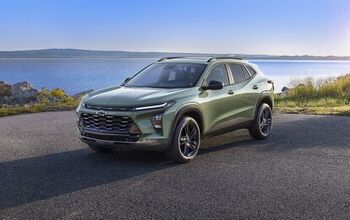

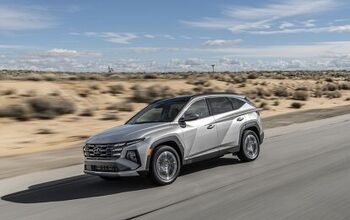



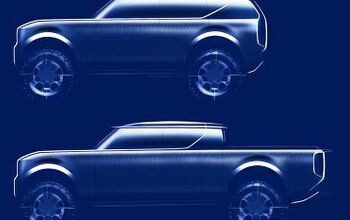



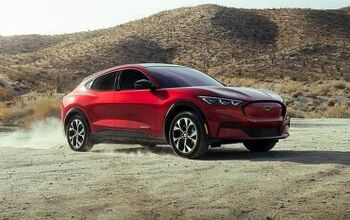

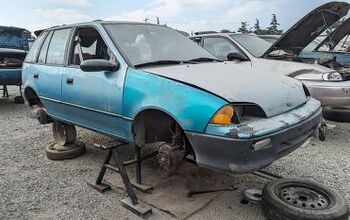




Comments
Join the conversation
It's trying to tell you to downshift/floor it, if you want faster acceleration.
"And, in a modern car (’08 Civic, stick), will the computer control prevent me from wasting gas by pushing the gas pedal beyond the point where I’ve reached 99% load?" Strictly addressing this statement there are a couple misconceptions evident. Modern cars cannot prevent you from pushing the accelerator pedal further than where you hit full engine load. Pushing the pedal further down actually won't consume any more fuel anyway. Also in computer-controlled/EFI automobiles the "wasting gas" part starts happening once you surpass 80-85% load as that is typically the threshold at which the ECU starts referencing safe/rich fuel maps and ignoring the O2 sensors. Your ScanGauge should have a setting that will display to you whether you are in open/closed-loop operation. If you monitor that particular gauge you can train yourself to drive within closed-loop control to maximize fuel economy if you so desire. You will notice that at low engine speeds and in higher gears it will switch to open-loop operation with smaller throttle inputs than at higher speeds or in lower gears. Given that vehicles now are all either MPFI or DI there is every incentive to massively oversize the throttle body. Larger throttles produce less flow restriction and the need for turbulent flow at the butterfly valve for fuel atomization no longer exists. Larger throttles "leak" a little more and prevent some emissions problems that arrive at high engine speeds when you side-step the throttle.